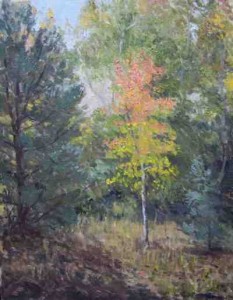Review by Martha Quillen
History – November 2006 – Colorado Central Magazine
Labels, Leadville, and Lore – 1870s -1890s History from a Tin Can
by Douglas H. Rhoades
Published by Rhoades Publishing, 2005
ISBN: 0-615-12816-5
AS A WARNING TO READERS, Ed often ends book reviews about self-published books by pointing out that they could have been greatly improved with a little professional editing.
But on the other hand, self-publishing does give a voice to fresh topics and ideas and also to smaller places and less commercial endeavors….
Labels, Leadville and Lore illustrates the best and worst traits of a homespun publication. The book’s copy is clearly a product of love and enthusiasm. Rhoades writes about some old tin cans he found while remodeling homes in Leadville, along with tin cans he bought on E-bay, and tin cans he found in antique stores, and the canning companies that made them, and how rare it is to find antique tin cans with their labels still attached, and how he took his on the Antiques Roadshow.
He also writes about jars, bottles, coins, dolls, chamber pots, kitchen utensils, and bits of Leadville lore.
Rhoades also includes pictures of his found objects. And they’re gorgeous.
IN FACT, THE WHOLE BOOK is gorgeous. It’s positively amazing how beautiful canning labels can be — and how diverse. The artwork portrays fish, moose, bear, blueberries, tomatoes, buildings, trains, rivers, cowboys, cherubs, women, ornaments, leaves, arrows, dingbats, and edging — most of which is in vivid colors and accompanied by a panoply of typefaces.
Labels, Leadville and Lore also includes pictures of old Leadville, and the information off the labels of many, many antique cans. There’s some fascinating information here, plus a personal story, and scads of pictures old and new, and some newspaper clippings.
But the narrative is somewhat disorganized and a mite repetitive. And in some places (especially in the beginning) the text is disconcertingly divided into separate little boxes.
Parts of the text are also bland, clumsy, and overdetailed with facts that would make better footnotes or endnotes. For instance, Rhoades writes:
“Some of the history of printing, regarding labels around this time period was trademark #663 for Calico Prints, registered by Coffin & Altemus of Philadelphia, on Feb. 20, 1872.
“Trademark #637 on Jan. 23, 1872, for Labels and Show-cards was registered by Samuel Crump of New York….”
It’s a little dry, right?
But after reading pages and pages of canning text, I started to wonder if this curious style might merely be part and parcel of the subject — since strained prose, too many little boxes, and highlighting graphics to the point that they diminish readability seems to be a part of the artform.
For example, one can said: “This SAUER KRAUT is prepared and cooked with great care, and will be found a delicious addition to the line of TABLE DELICACIES. It does away entirely with the odor so objectionable to many when cooked at home.”
And another promised: “This corn is grown from seed selected and improved, with the greatest care and when it reaches the proper stage for picking it is cut from the cob and immediately sealed air tight in its own milk.”
Whereas another warned:
UNDER THE PATENTED PROCESS ALONE CAN THE BEANS BE WARRANTED AS PERFECT AND TO KEEP IN ANY CLIMATE. BUYERS ARE HEREBY CAUTIONED, AS ALL INFRINGEMENTS ARE LIABLE TO SEIZURE.
CAUTION: NONE GENUINE WITHOUT “W.K. LEWIS, BOSTON BAKED BEANS, PATENTED AUGUST 7TH 1877,”STAMPED IN THE TOP OF EACH CAN WITH A LABEL BEARING THE BLUE RIBAND AND THE SEAL OF THE UNITED STATES.
So be forewarned, Labels, Leadville and Lore is a self-published product with foibles and quirks aplenty. But perhaps that’s for the best, since you’d be hard-pressed to find such a fanciful and ardent Time-Life production.


